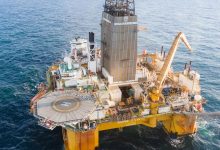World’s Longest ETH Production Pipeline
Neptune Energy finished installing and testing the world’s longest trace-heated (ETH) subsea production pipeline at its operated Fenja field in the Norwegian sea. The 37 kilometre electrically trace-heated (ETH) pipe-in-pipe solution will transport oil from the field to the Njord A platform, operated by Equinor.
The innovative use of the ETH pipe-in-pipe significantly reduced the potential cost of the development by enabling the field to be tied back to existing infrastructure.
“Completing the installation and testing of the ETH pipe is a great technical achievement and a major step forward in the development of the Fenja field. The ETH pipe-in-pipe solution is crucial for extracting the oil, and is a creative, cost-effective approach that permitted us to tie the field back to existing infrastructure,” Neptune Energy’s Director of Projects and Engineering in Norway, Erik Oppedal, said.
“Norway is an important part of Neptune’s geographically-diverse portfolio, and this is an excellent example of the company’s commitment to investing in the region and adopting advanced technologies to overcome challenges.”
The ETH pipeline was developed and qualified through a collaborative approach with TechnipFMC. Due to the high wax content of the Fenja field’s oil, the contents of the pipeline must be warmed to a temperature above 28-degrees Celsius before starting the flow after a scheduled shut down or interruption. During normal production, the temperature in the pipeline would be well above this temperature.
“The successful completion of the Fenja ETH pipe-in-pipe installation has been made possible through our unique iEPCI™ project capabilities, close collaboration with Neptune Energy, and by leveraging TechnipFMC’s extensive experience in the technology. This technology has the potential to unlock future developments with challenging reservoir properties,” Ståle Ryggvik, TechnipFMC’s Project Director, added.
The offshore installation was carried out across two subsea campaigns in 2020 and 2021 by TechnipFMC’s vessel, approximately 120 kilometres north of Kristiansund, Norway, at a water depth of about 320 metres. The fabrication and assembly of the ETH-pipe was conducted by TechnipFMC.
Drilling of the Fenja production wells is scheduled to begin in fourth quarter, 2021, by the Deepsea Yantai drilling rig.
Partners: Neptune Energy (Operator, 30%), Vår Energi, (45%), Suncor Energy (17.5%), DNO (7.5%).
Fenja development facts:
The Fenja field, currently under development, consists of an oil accumulation with a gas cap trapped in the intra Melke formation sandstones. Drilling of the development wells will start with the Deepsea Yantai in Q4 2021, with first oil targeted in 2022.
Neptune Energy Norge is a subsidiary of Neptune Energy. The company is the operator of the Gjøa field in the North Sea. It has two operated development projects: Fenja and Duva. In 2020, the company made the Dugong discovery, which is now being considered for development. The Company is a partner in several producing fields: Bauge (under development), Brage, Draugen, Fram, Gudrun, Hyme, Ivar Aasen, Njord and Snøhvit. Neptune Energy Norge is a participant in a total of 81 licences. For the full year 2020, Neptune produced 55 kboepd in Norway.







